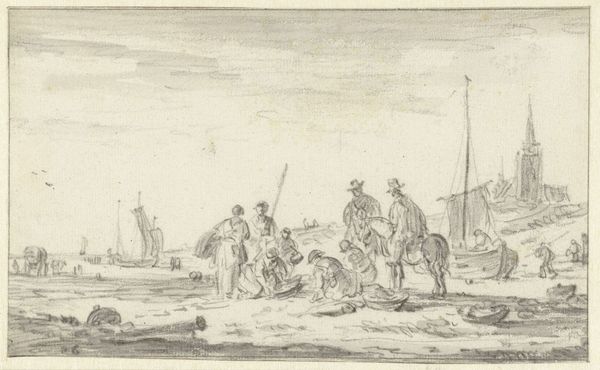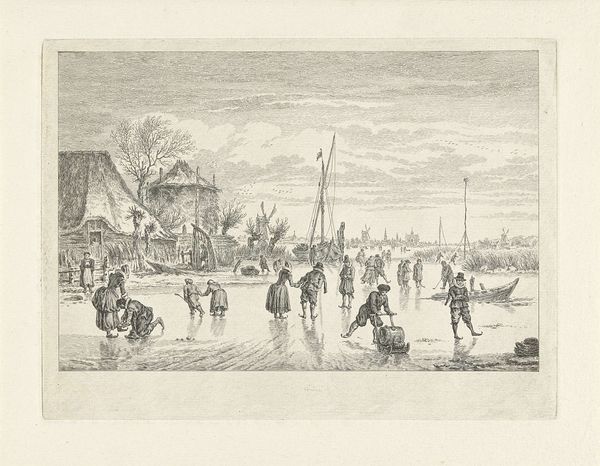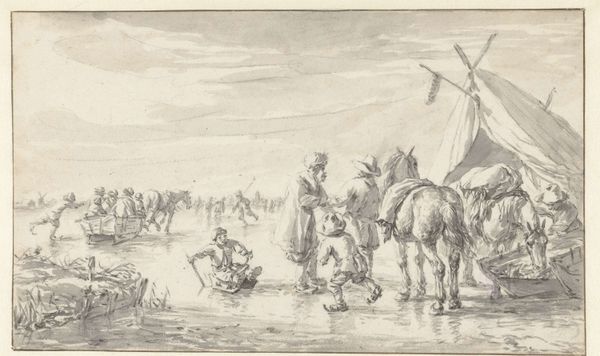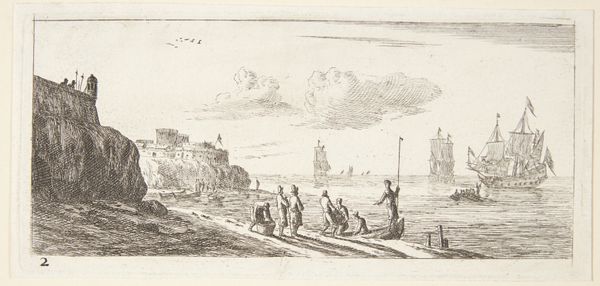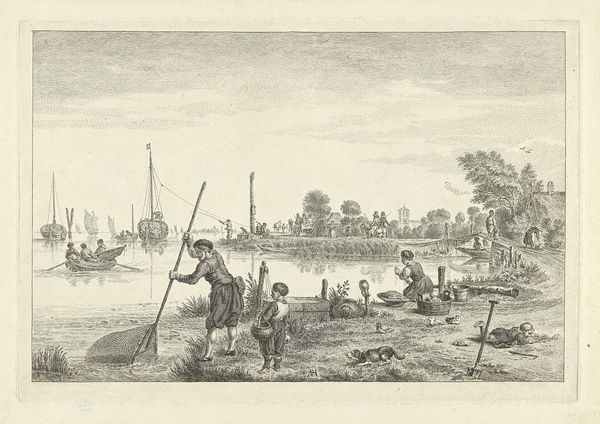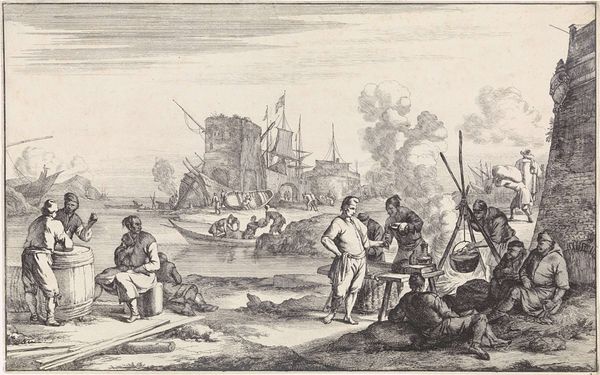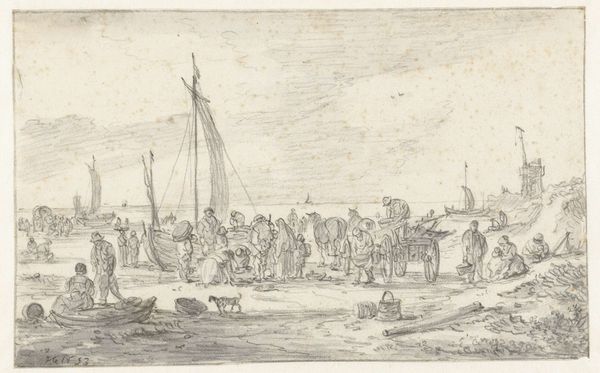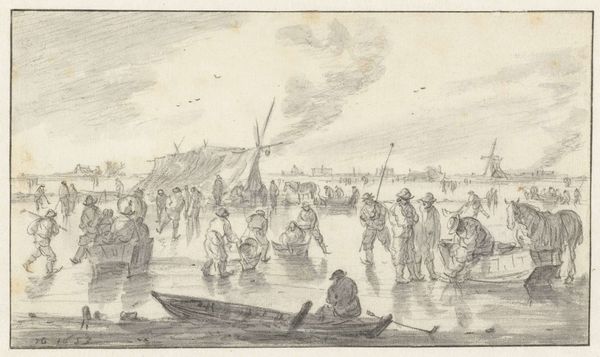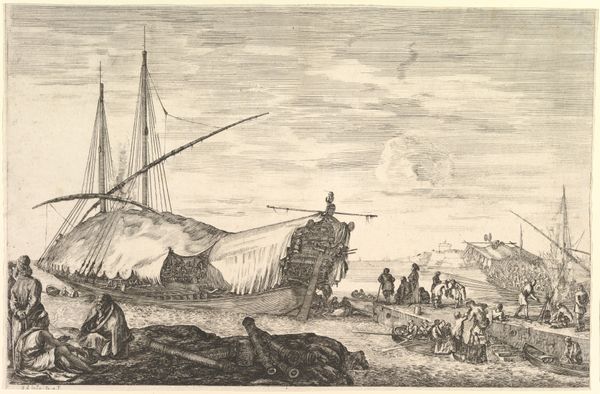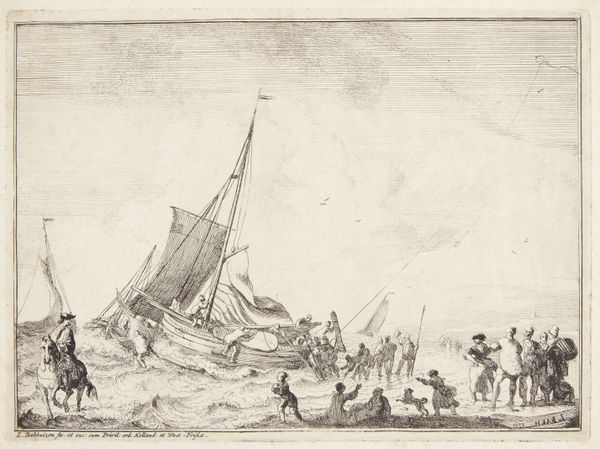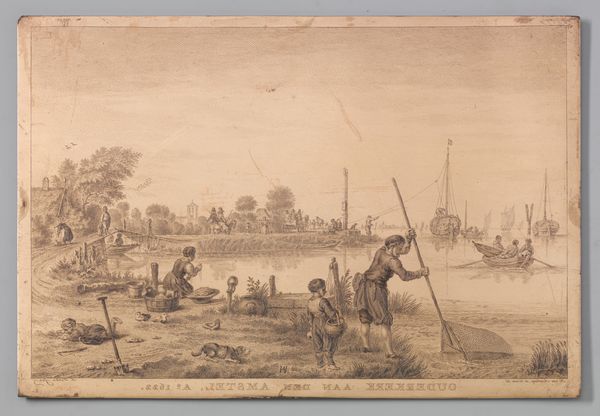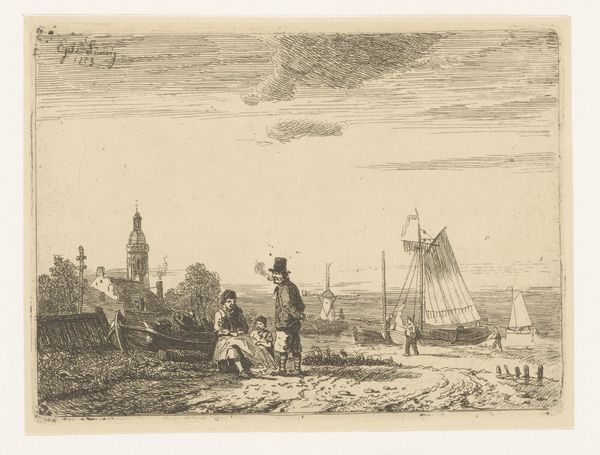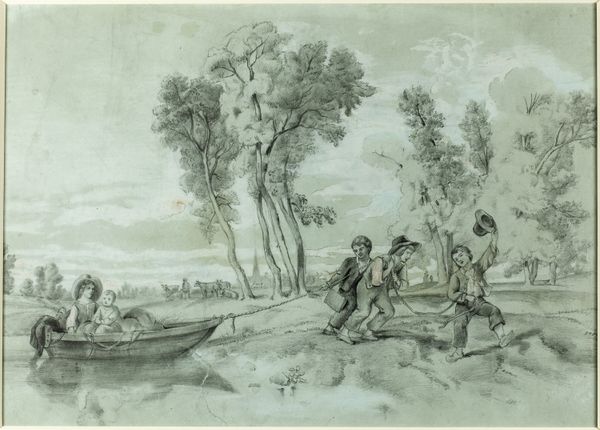
drawing, ink, pen
#
drawing
#
dutch-golden-age
#
landscape
#
figuration
#
ink
#
pen
#
genre-painting
#
realism
Dimensions: height 136 mm, width 200 mm
Copyright: Rijks Museum: Open Domain
Editor: This pen and ink drawing, “Polderlandschap met vissers,” or "Polder Landscape with Fishermen," made by Pieter Coopse sometime between 1668 and 1677, it's so delicate. All those figures scattered around in the open, flat landscape… It almost feels like a snapshot of everyday life. What catches your eye in this piece? Curator: For me, this work encapsulates a key aspect of Dutch Golden Age art: the democratizing of subject matter. Prior to this, landscapes, especially those populated with ordinary folk like fishermen, rarely took center stage. This drawing reflects the burgeoning merchant class, their values, and their patronage of art that mirrored their own lives and surroundings. Editor: So, it's not just a pretty landscape; it reflects a societal shift? Curator: Precisely! Think about the role of water management in the Netherlands during this time. The “polderlandschap,” or polder landscape, wasn’t just a backdrop. It represented a constant struggle, a victory of human ingenuity over nature. The fishermen become emblematic figures in that struggle, subjects worthy of artistic attention. What does their placement within the landscape tell you? Editor: I see what you mean, they're not heroic figures; they blend in. The tower almost fades into the background, it is quite subdued. Curator: Exactly! This submersion underscores the complex relationship between the individual and the environment. And look at the scale: Coopse's drawing mirrors how the burgeoning art market, not courtly commissions, shapes our understanding of art's role. The increasing urbanization influenced artistic preferences, this is the people's art! Editor: I see! This makes me think differently about all those Dutch landscapes now. It’s fascinating how a drawing can be a window into so much more than just a pretty view. Curator: Indeed. By considering the historical context and the societal values reflected in Coopse’s drawing, we move beyond simply admiring its aesthetic qualities and towards a richer understanding of its cultural significance.
Comments
No comments
Be the first to comment and join the conversation on the ultimate creative platform.
